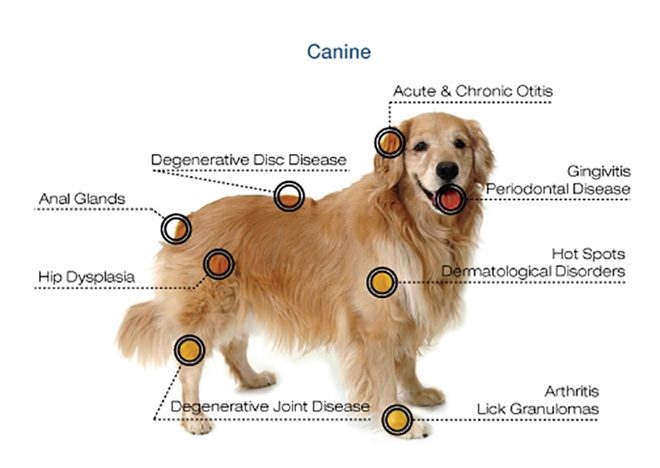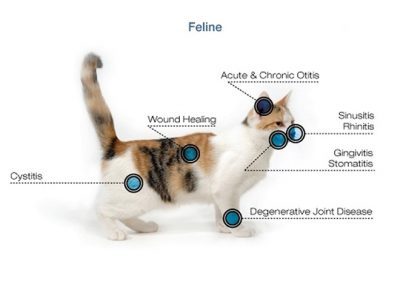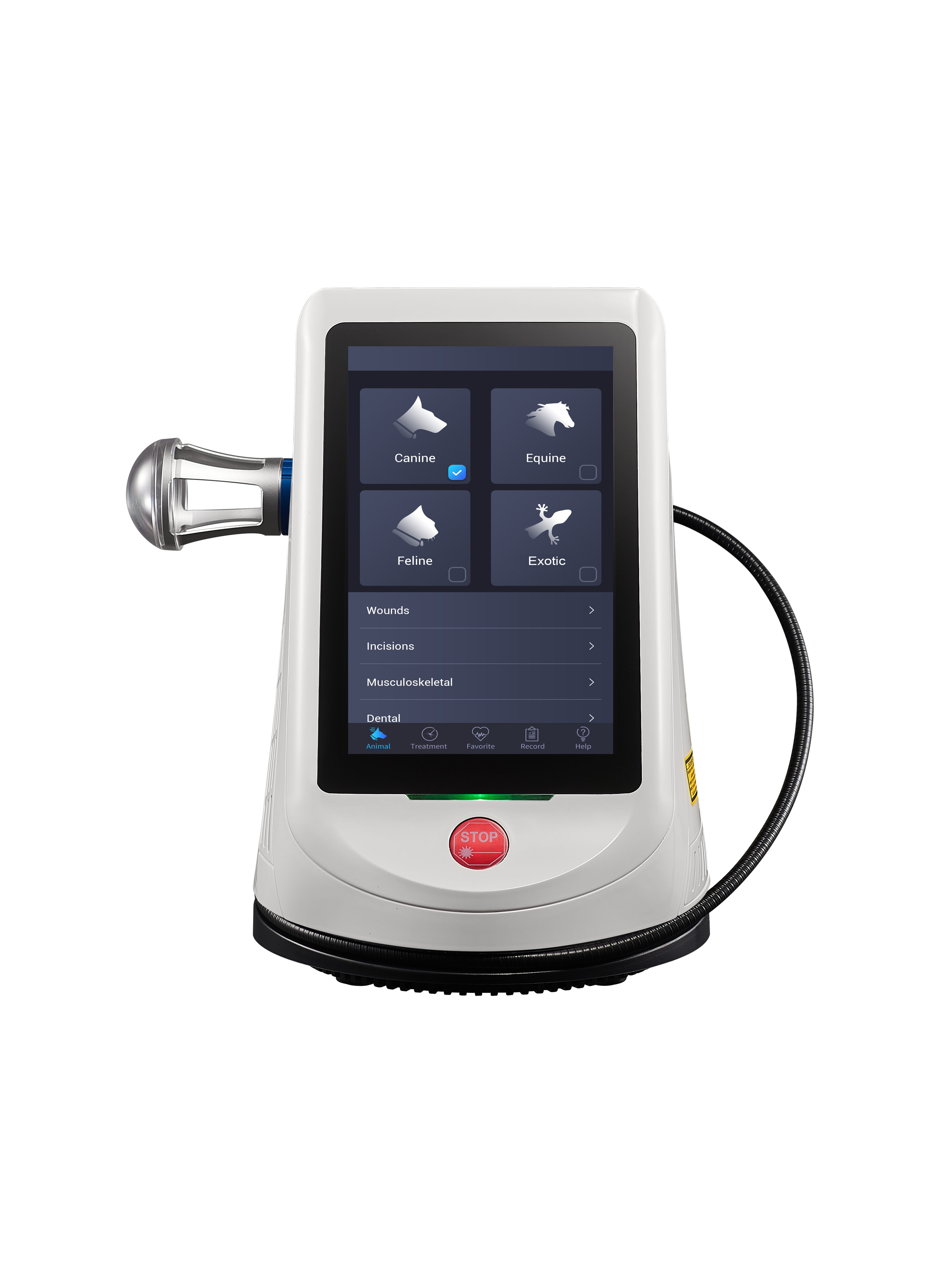About Laser Therapy
Vets1Laser


Laser Therapy Explained
Using laser therapy, veterinarians are able to implement rehabilitation treatment plans to restore mobility, strengthen muscles and joints, and help animals heal faster post-operatively while focusing on reducing pain. Laser therapy may begin prior to surgery, following an injury, or upon referral for a limb deformity. But it is most successful when laser therapy treatments are integrated and coordinated from the beginning, when the initial injury occurs and prior to a surgery being performed. Maintenance laser therapy can be used post rehabilitation to assist continued mobility, strength and fitness
The power of the therapeutic laser matters in terms of the dose delivered, and the time needed to deliver the treatment dose. Power is a unit of time, and is expressed in watts (w) or milliwatts (mw). One watt is one joule of energy delivered per second, and the laser dose is typically expressed as joules/cm2 – the energy delivered over a surface area. The most commonly used therapeutic lasers in veterinary medicine are Class III lasers, which may deliver energy from 1mw to 500mw, and Class IV lasers, which deliver power at greater than 500mw.
A lower watt laser provides less energy delivery to deeper tissues so the time needed to deliver a treatment is longer. A lower power laser is better suited for treating superficial structures because of the limited power density to drive photons into the deeper tissues. A higher watt laser allows the treatment to be delivered over a shorter period and involves administering the laser energy with a sweeping motion over the affected area. This sweeping motion will provide more complete coverage of the treatment area and may cover surrounding areas that could be causing secondary or referred pain. Pulsing of the laser beam may provide less heating of tissues at the surface while allowing for an adequate level of energy to reach the deeper target tissues, but more research is needed to define the optimal approach to a pulsed laser beam.

Many Years ofVeterinary ExperienceTo Support Our Customers
Why You Should Choose the Vets1Laser?
Our Vets1Laser gives you the ability to use continuous, pulsed, or repeat modes of therapy. You can select on skin colour as well as pain levels. These choices make sure that you have the proper tools to treat most conditions that are presented to you. The versatility of the Vets1Laser allows you to alter all treatments by power levels as well as time and wave type. You can also create and save specific treatments that you prefer.
Class IV lasers have shown time and time again that results are obtained faster and with less patient time and cost. In order for healing and rehabilitation to take place, the Laser device must deliver enough joules to actually trigger the healing response, and many Class III lasers simply don’t or can’t give this power. The protocols provided with LESS powerful devices inevitably UNDERDOSE the patient because the correct dose in JOULES would take up to 30-40mins. This is not satisfactory in a professional environment.
On the other hand the Vets1Laser can provide fractions of a Watt up to 30 Watts for fast and efficient therapy.
Top Notch Design
Multi Wavelength
Easy to Use
Australian Support
Warranty
Views: 66
